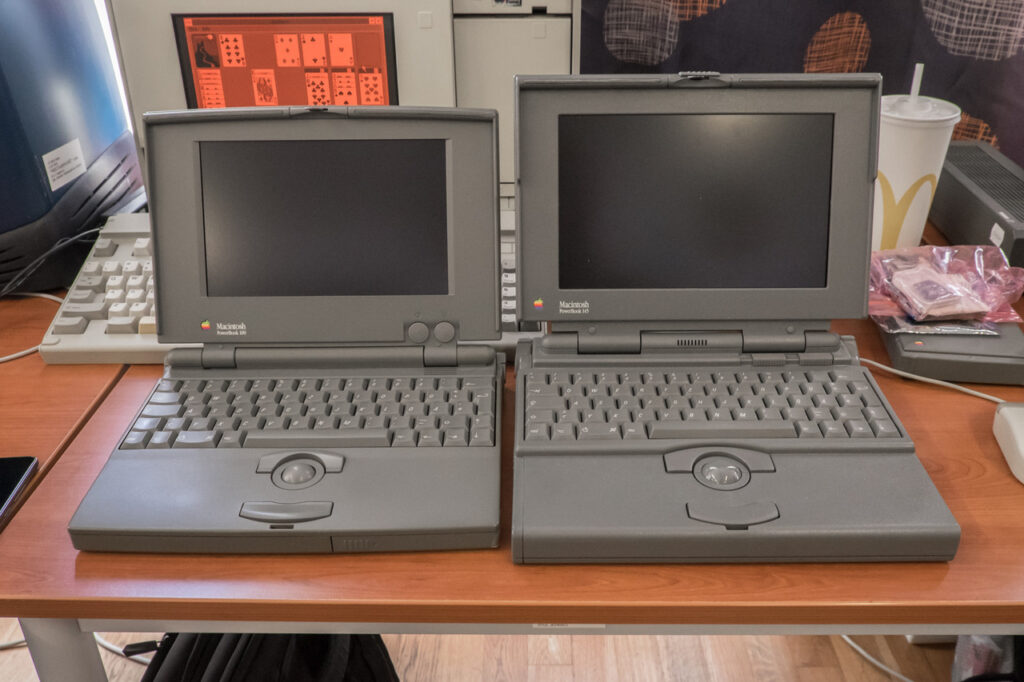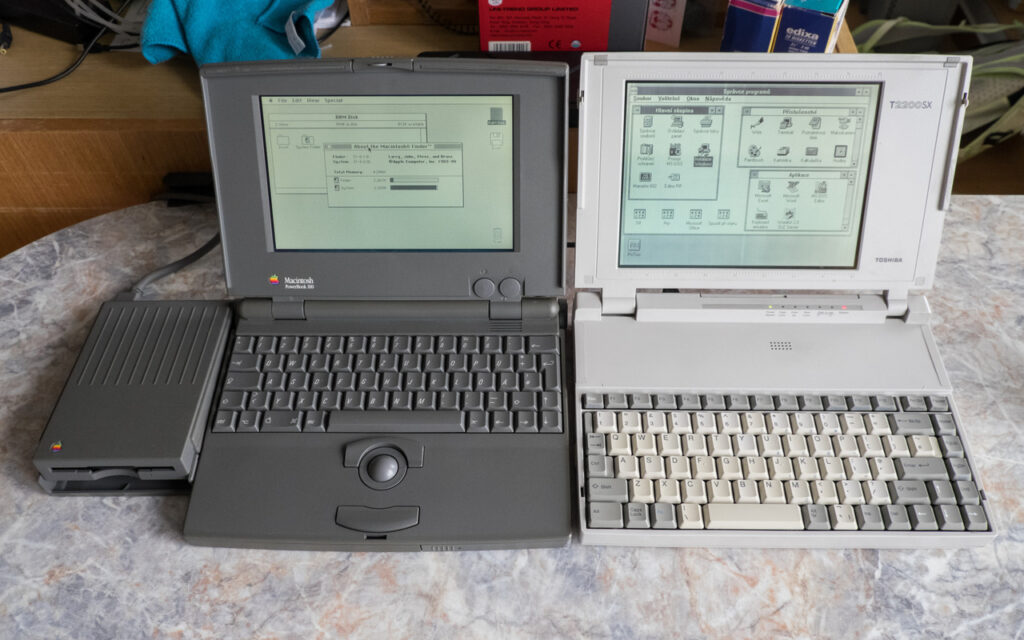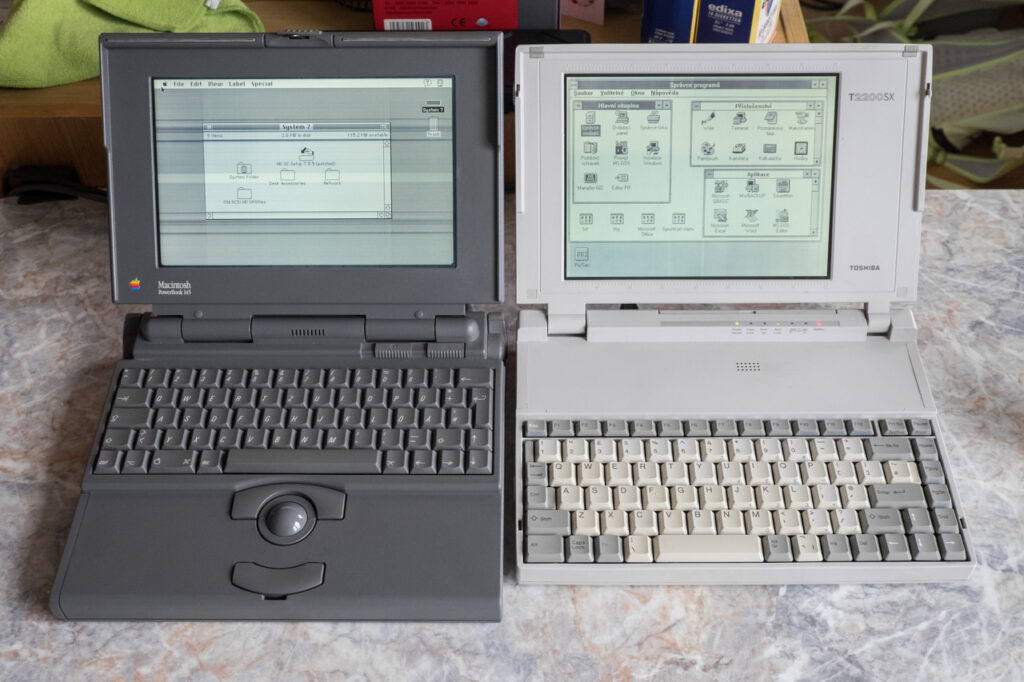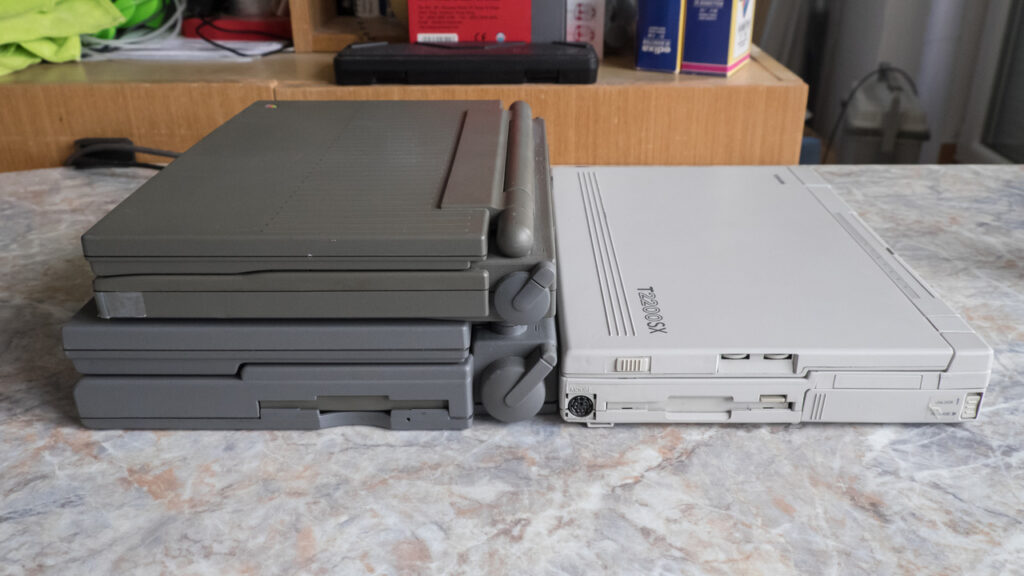PowerBook 100 has a special place in my heart. I had one back in the 1990s and I loved its big trackball, comfortable keyboard and proper palmrest area – features that were not present in typical PC laptops. Other early PowerBooks were not as small and light as the PowerBook 100, but they shared many design decisions with it. I perfectly understand people who bought and used these computers when they were new. On the other side, I cannot agree with those who see early PowerBooks as universally superior machines to PC notebooks. That’s just not true.
From time to time, I see nonsense statements like that PowerBooks were the first laptops with stereo sound, optical drives, docking stations or other features. Not sure at the moment, but I think that you can find some of these statements even on Wikipedia. However, all of these features were previously available in PC laptops.
In fact, the generations of early PowerBooks that came after the first generation were not considered very innovative back then. Just a few examples:
- Support for gray-scale video modes on internal screens was added at the end of 1992. Until that, it was possible to run only programs that were written to work with the black and white mode. All VGA-equipped PC laptops supported gray scale and could also translate colors into levels of grey in hardware (no OS or program support was required).
- Unlike with PC laptops, there was no support for features like color LCD screens, PCMCIA expansion cards and microprocessors with built-in power management capabilities in 1992.
- There was no graphics acceleration in Apple’s video circuits which resulted in significantly slower screen redraw. This started to be a problem when Apple offered PowerBooks with color screens where the graphics core had to process far more data. The first color PowerBooks with competitively fast graphics chips were available after Apple started to use generic PCI solutions from the PC world (mostly Chips & Technologies, later ATI).
- Many of the PowerBook graphics chips didn’t support more than 256 colors on external screens even in 1994. Lower-end machines didn’t even have a video output for an external screen.
The first color TFT PowerBook – 180c – was released in August, 1993 – almost a year after major PC brands released their first TFT portables. The PowerBook 180c was equipped with a small 8.4-inch 640×480 screen when PC laptops often used 9.5-inch screens and there were some with even 10.5-inch screens (like the famous IBM ThinkPad 700C – December, 1992). That was not the only issue – it lasted only about an hour on one charge because (unlike PC laptops) it didn’t have a 3.3V CPU, advanced power management features and NiMH batteries.
Heat and power consumption was so big issue with Motorola 68040 that Apple had to release 040-based PowerBooks with a version of the CPU that didn’t have a math coprocessor. Thus, programs that used it heavily were twice as fast when running on the previous generation of high-end 030-based PowerBooks. 486DX-based PC laptops could run the same code four times as fast.
The machines on the photos:
(1) Apple PowerBook 100 (1991), 16-MHz 68000, 4MB RAM, 20MB HDD
(2) Toshiba T2200SX (1991), 20-MHz 386SX, 4MB RAM, 60MB HDD
(3) Apple PowerBook 145 (1993), 25-MHz 68030, 8MB RAM, 80MB HDD



